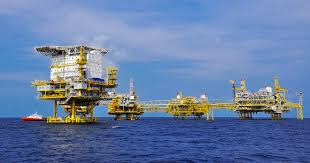
Working offshore has always been a risky business. According to Chopin Law, a maritime injury law firm, offshore and maritime/shipping workers face a unique set of challenges day in and day out. The work is said not only to be physically demanding, but the close proximity of big equipment and heavy machinery can sometimes lead to serious injury if the negligence of an employer or employers is involved.
In fact, offshore work can be so risky that employees are sometimes caught in catastrophic accidents, like sudden explosions on an oil rig, which can cause serious burns or death. Slips and fall accidents are considered some of the most common accidents for offshore workers.
Disturbingly, personal injury for offshore and shipping workers are said to be on the rise. A recent report by GCaptain, states that as little as twenty-four months ago, they published a report that highlighted the difficulty in uncovering reliable injury and fatality figures for offshore worksites around the world.
The author of the 2022 report stresses that, in the U.S., the Bureau of Safety and Environmental Enforcement or BSEE, which is considered one of the top federal sources for offshore injury stats, operates within a relatively narrow jurisdiction. That is, occupational injury or injuries which exclude transportation incidents, in the Outer Continental Shelf or OCS. In other words, federal waters.
While it’s said that the BSEE often receives fatality reports from numerous sources, it's common for those fatalities to be covered under different jurisdictions. For example, in 2019, the BSEE officially reported 6 deaths that occurred at offshore gas and oil sites. However, only 2 of them fell under the jurisdiction of BSEE.
But it’s these “narrow gaps” that often occur between the different federal agencies, which result in serious injuries and fatalities going under-reported. Other federal information and reporting tools, such as Fatalities in Oil & Gas Extraction Databases or FOG, are said to provide more accurate and thorough data by compiling all the results from Google New Alerts and OSHA reports. But even this reporting is not without its faults, since OSHA has no jurisdiction in the Outer Continental Shelf, which is considered BSEE territory.
Even with data showing fifty percent of offshore occupational fatalities occurring in transport accidents, the BSEE still does not view transport fatalities as their official mandate. Those investigations are left up to the FAA or the U.S. Coast Guard. However, neither the FAA nor the Coast Guard report on passenger casualties, which are based on occupation. In other words, when the Coast Guard issued a report for one marine casualty in 2022 which involved a cruise ship incident, it made zero mention of the whether the person affected was a passenger or a crew member.
In the end, what all this means is there’s very little data that reflects how often offshore gas and oil workers experience fatal risks. Plus, there is even less data to be had regarding serious and non-serious injuries. Note that as of the beginning of the third quarter of 2024, the BSEE has yet to release its data for 2023. Despite these federal bureaucratic obstacles, notable trends that have been taking place over the past five years need to be exposed.
- Students develop mobile app to support SRHR learning
- Cops arrested for conning ICT perm sec
- Hwange communities tackle human-wildlife conflicts, crime
- Students develop mobile app to support SRHR learning
Keep Reading
The typical number of injuries reported by the BSEE since 2018 has been between 160 and 170. In 2019, 222 injuries were reported which were the result, in part, of several multi-casualty incidents which occurred that year. However, in 2022, it reported around 200 injuries with virtually no multi-casualty incidents. In short, the injury rate simply skyrocketed by close to 20 percent.
A recent report compiled by the Energy News Network claimed that offshore jobs have been on a steady decline since 2011. It’s said that there is a direct correlation between low staffing and an increase in injuries. That said, the injury rate can be attributed to another high figure. That is, BSEE data shows that a much higher number of lifting accidents occurred in 2022 than in prior years.
Lifting accidents are said to have tripled since 2018, even in the wake of the BSEE establishing a 2020 task force whose sole job it was to cut lift rate accidents by half. It should be noted that lifting accidents are the leading cause of some of the most common hazards offshore workers face every day. These include being crushed, getting pinned, or struck by falling or swinging objects. Being caught or struck by objects/heavy equipment accounts for close to two-thirds of all injuries in the gas and oil sector.
Employing Technology to Prevent Lifting AccidentsSays GCaptain, the majority of lifting accidents take place during routine work procedures. “High stakes lifting operations” are usually considered safer since so much planning and engineering goes into them. But it’s normal lifting operations that present offshore workers with the highest rate of incident and personal injury.
Technology is now being utilized to reduce the recent proliferation of lifting accidents. These include motion sensor cameras that can notify crane operators when and where people nearby are positioned. The new smart tech devices are said to operate from “the premise that operational conditions” on offshore platforms are the major cause of lifting accidents.
However, could there be a simpler explanation for lifting accidents like operator exhaustion or even boredom? If that does turn out not to be the case, why then have lifting accidents spiked dramatically over the last five-year period?
One of the answers to this question is staffing. In fact, staffing is said to have taken one of the most profound shifts in offshore platform operations over the course of the past decade. Low crude prices that came about in 2014 are said to have led directly to lower staffing, while the 2020 pandemic gutted many offshore companies. Combined with new DEI regulations and fewer skilled and experienced laborers who are required to run a safe drilling operation are available. The longer this situation is allowed to persist, the more accidents and personal injuries are likely to occur.






